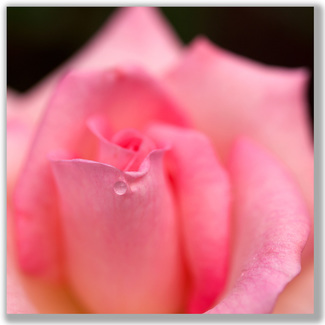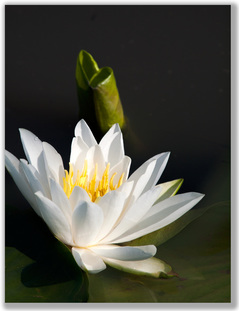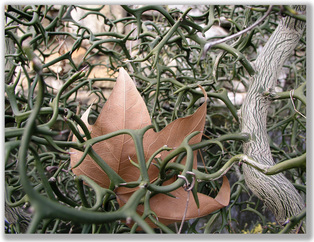 Single Tear Single Tear Chris Fedderson — MacroFine Musings ~~~~~~~~~~~~~~~~~~~~~~~~~~~~~ Twelve significant photographs in any one year is a good crop. — Ansel Adams Twelve?! One a Month?! Heck, I can take 500 in one day! What’s wrong with that guy?! Not a dang thing. Mr. Adams just knew how to look critically and unemotionally at his work so he could cull his collected production down to just his very best “keepers”. Have you ever seen one of his images and said, “eh…”? Neither have I. Why should we care about culling and deleting any of our shots, anyway? Each one has some value and we might want to use it… sometime… right? Yes. But… does its value warrant storing it? Does it illustrate a lesson, or technique, or photographic result which we will need to refer to again? Is it the only remaining photo of Aunt Millie, dearly departed? Well then, by all means keep these — but cull the rest. What you are achieving by doing this culling is avoiding amassing tens of terabytes of “also-rans” among which you will then lose your keepers, never to be able to find them again. I have no idea what criteria Mr. Adams used, nor do I know what criteria you might use in assessing your shots. But I will share with you my five points and you may adopt them, alter them to make them fit your needs, or simply continue to amass those terabytes. . . 1. BEST FOCUS Mr. Adams also said, “There is nothing worse than a sharp image of a fuzzy concept.” The corollary is also true: “There is nothing worse than a fuzzy image of a sharp concept”. I don’t mean necessarily edge-to-edge or foreground-to-background all in focus, but is the essential focal point crisp? This may be only a single drop of water, but if that drop tells your whole story it MUST be in focus; and the image may well benefit from the rest being somewhat out of focus. This focus thing is the deal breaker. Without it, the shot is junk.  Autumn Effect Autumn Effect 2. COMPOSITION Did I chop off the top of Aunt Millie’s bouffant? Is Uncle Marvin’s left shoulder left out? Did I dead-center the butterfly? Or possibly worse, is it flying OUT of the frame? Do I have elements to direct the viewer’s eye? Composition will set the mood and give an indication of the story within your image. Be sure it says what you intend it to.  Lily Grace Lily Grace 3. LIGHTING Is that beautiful flower — the whole point to the image — lost in a wash of cluttered background? Is your single drop of water in a deep shadow while the rest of the flower is brightly lit? Does your snow look really blue, or worse, really yellow? Is everything behind Aunt Millie so bright it washes out into a blurred glow, leaving her in the dark? Or is the sun so bright in her eyes that she looks like one of those squinted-up apple dolls?  Steel Hibiscus Steel Hibiscus 4. COLOR I shoot color, but this rule applies just as well to B+W. What I’m looking for here is more than just the presence of color. I want great color contrast, color juxtaposition, color coordination, color framing elements within the image, color balance, color depth — or softness …  Life in the City Life in the City 5. UNUSUAL ELEMENTS or MESSAGE . . . YOUR HOOK For me, the most important criteria is: what is the reason for this image? Does it carry a special or unusual meaning or message? Is it particularly poignant? It may be technically perfect. Stunningly focused and composed. But if it’s a snapshot of nothing… cull it! After all, you don’t want to “eh…” people, you want to “WOW!” people. I hate culling. It’s like deciding which of your kids you like best. And then telling them. But, unlike with kids, it must be done, if for no other reason than it forces you to detach, and to look critically at your work and techniques to assess the good, the bad, and the truly ugly. Do it — you’ll learn a lot! Have Fun!
Thank You for visiting, — Chris P.s. In future posts, I will be elaborating on each of these criteria. In the meantime, create some of your own, comment on mine, and we’ll compare notes. Comments are closed.
|
Categories
All
About Chris
I am a Virginia-based photographer and gather my images while hiking in parks and natural areas here at home and in the locations I travel to. I also love to visit arboretums and botanic gardens to find unusual and exotic subjects. Archives
March 2017
|
 RSS Feed
RSS Feed
